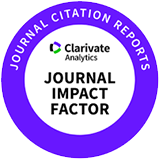Fat level and excessive fat percentage of retail-ready pork belly slices by quality grade
Received: Mar 26, 2025 ; Revised: Apr 08, 2025 ; Accepted: Apr 09, 2025
Published Online: Apr 22, 2025
Abstract
Recently, consumers have complained about being served over-fat pork belly on social forums; therefore, providing information about the excess fat of belly slices is necessary for meat traders and consumers. Wholesale-ready bellies of commercial pigs (66 gilts and 41 barrows) including quality grade 1+ (n=55), quality grade 1 (n=24), and quality grade 2 (n=28) were used to evaluate the fat level and trimmed excessive fat of retail-ready pork belly slices by the quality grade. Each belly was prepared into 18 slices corresponding to 12 thoracic vertebrae (5th-16ththoracic vertebrae) and 6 lumbar vertebrae (1st-6thlumbar vertebrae). The excessive fat in slices was trimmed following the government’s guidelines, and expressed as a trimming loss percentage. The fat level in each slice was analyzed using a FoodScan. When gender factor was ignored, no differences in fat level were found among the quality grade categories for all slices. When gender was considered an influencing factor, the fat level in almost barrow belly slices was higher (by 5-6%) than in gilts, especially in the quality grade 1 and quality grade 2 (p<0.05). In all quality grades, the highest excessive fat was found in slices at 12th-14th thoracic vertebrae (7.28-11.55%), and the lowest (0.59-5.25%) was found at the lumbar vertebras. Most of the barrow belly slices had a significantly (p<0.05) higher trimming loss than gilts in all 3 quality grades. These findings suggest that an adjustment of belly wholesale prices or following the government’s cutting guidelines to ensure the interests of both traders and consumers is needed.













